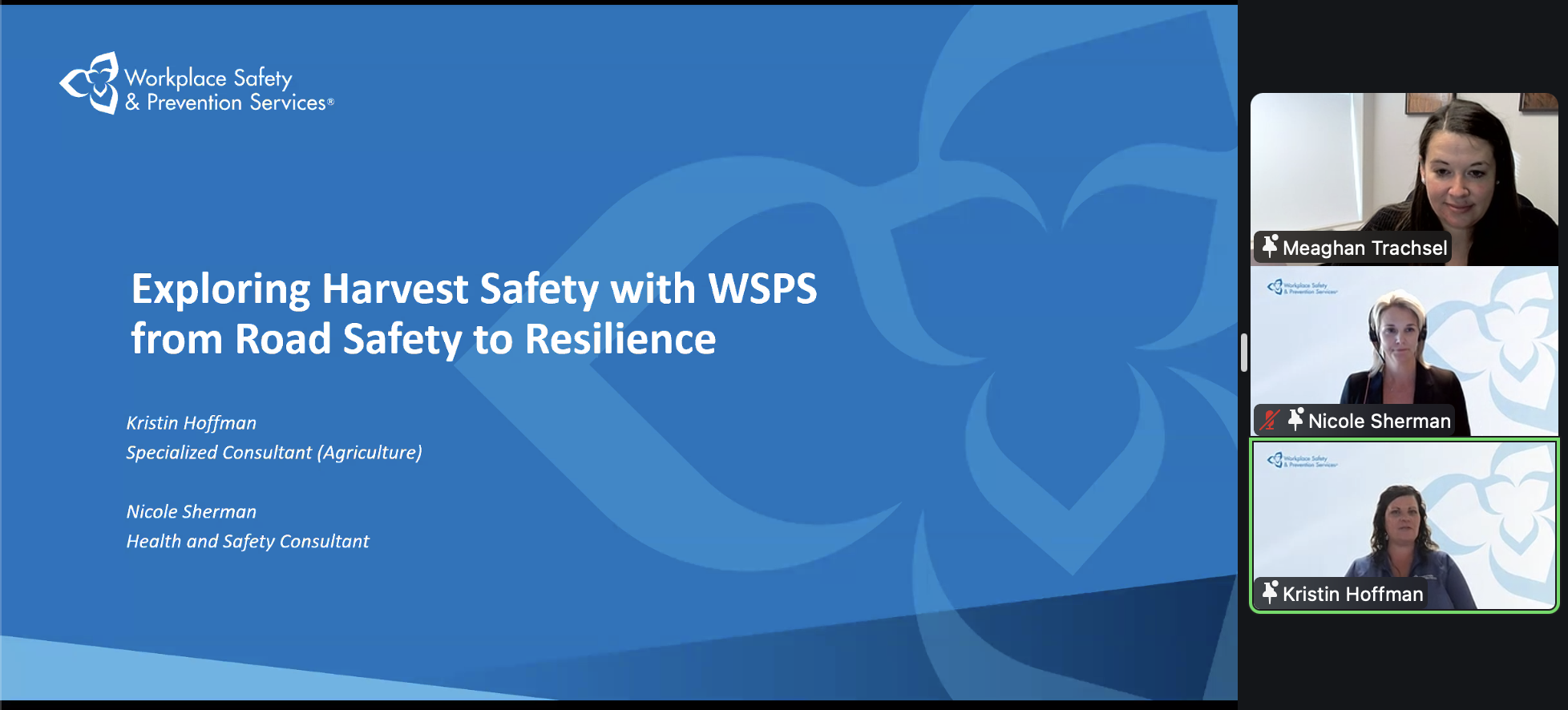(Resource News International) — Canada and the European Union have endorsed a flax protocol that was developed by the Canadian government in consultation with the Flax Council of Canada, Canadian flax exporters and DG Sanco of the European Commission, according to an official with Flax Council of Canada.
The protocol describes the system of sampling, testing and documentation pertaining to the presence of CDC Triffid in shipments of Canadian flaxseed to the European Union, said Barry Hall, president of the Flax Council of Canada.
The need to develop the protocol came in response to the suspension of all Canadian flaxseed imports to Europe after the discovery by European labs of a genetic marker in the commodity in July.
Read Also

Tips for staying safe this harvest season
Kristin Hoffman of WSPS explains measures for increased farm safety around harvest season
In early September, the Canadian Grain Commission confirmed a trace amount of GM material in some Canadian flaxseed shipments. Subsequent discoveries in additional Canadian flaxseed shipments have also occurred.
Europe has a zero tolerance policy for certain genetically modified organisms (GMOs).
The European laboratories claim the GMO material in the Canadian flaxseed is FP967, commonly known as CDC Triffid.
Europe represents about 70 per cent of Canada’s flax exports. On average between 500,000 to 700,000 tonnes of Canadian flaxseed, or roughly two thirds of Canada’s production, is shipped to European destinations on a crop year basis, private sources estimated.
There are currently no varieties of GM flaxseed registered in Canada. Triffid got regulatory feed and environmental safety authorizations in 1996, and food safety authorizations in 1998, but was never released for commercial production.
The Crop Development Centre of the University of Saskatchewan (CDC) had developed Triffid, which is tolerant to soil residues of certain herbicides. It was never marketed as seed for commercial crop production in Canada and was voluntarily deregistered in 2001 on the basis of market access concerns with the EU. It was believed that all Triffid seed had been removed from the marketplace.
Who will test?
“This was an important first step in resuming Canadian flaxseed exports to European destinations,” Mike Jubinville, an analyst with ProFarmer Canada, said of the new protocol. “However, now the next step will be to determine who will be doing the protocol testing.”
If approval is given that the Canadian Grain Commission does the testing before the flax is exported, shippers of the flaxseed will have more confidence in moving the product to its destination, Jubinville said.
However, if members of the European Union want to conduct their own testing, there will be less confidence among the shippers to move flaxseed from Canada to those locales.
“Each member state may or may not adopt the same protocols, and if there is a chance of the Canadian flaxseed shipments being cancelled by the EU member, that could become a very costly adventure for the Canadian exporter,” Jubinville said. “It’s at that point, those shippers will be reluctant to make any sales to the EU.”
Once laboratories have been validated, testing of samples will begin, with priority being given to selection of Triffid-free material for shipment of flax to Europe, Hall said.
The government and the Winnipeg-based flax council “will be working in a collaborative manner with our producers to identify stocks of Triffid and take steps to ensure that these stocks are removed from the system,” Hall said.
The Flax Council of Canada was hopeful that laboratories will be validated and that sufficient testing can be conducted to minimize the risk of positive tests in time for shipments of flax to resume to Europe before the close of navigation this year.
“Canada’s objective through the implementation of the flax protocol is to meet strict EU import requirements and to allow for a secure and predictable supply of flaxseed to Europe,” Hall said.
He acknowledged that further import testing by EU member states may impose additional risk to Canadian and European industry, causing exporters to possibly reconsider shipping to those respective export markets.
However, in order to ensure quick resolution and to avoid further trade disruptions, it’s essential for member states to support this approach “expeditiously,” Hall said.











